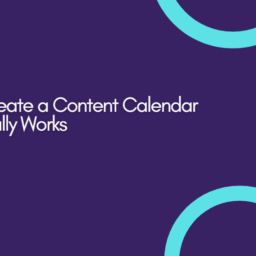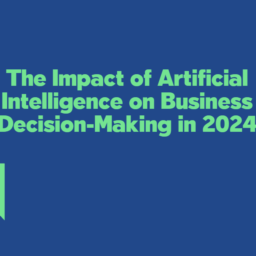The world of performance marketing has always been a battleground of optimization. Every click, every impression, every conversion is scrutinized for maximum ROI. In 2025, the sharpest tool in the performance marketer’s arsenal isn’t a new ad platform or a secret bidding strategy; it’s Artificial Intelligence.
AI is no longer a futuristic concept; it’s deeply embedded in the “trenches” of daily campaign management, transforming everything from ad creation to audience targeting and budget allocation. Let’s look at some real-world case studies and examples that illustrate how AI is delivering tangible, measurable results for brands right now.
1. Hyper-Personalization at Scale: The Coca-Cola & Netflix Playbook
One of the biggest wins for AI in performance marketing is its ability to personalize experiences on an unprecedented scale.
- Coca-Cola’s “Share a Coke” Evolution: While the original campaign was brilliant, AI took it further. By leveraging AI to analyze social media data, sales trends, and consumer feedback, Coca-Cola could identify trending names and even generate unique, AI-driven bottle designs. This deep personalization resulted in a 2% increase in sales and an astounding 870% boost in social media engagement. It’s not just about putting a name on a bottle; it’s about creating a unique, shareable experience powered by AI insights.
- Netflix’s Recommendation Engine: This is the gold standard for personalized engagement. Netflix’s AI system analyzes viewing history, preferences, and even interactions with thumbnails to suggest content. This isn’t just a “nice-to-have”; over 80% of content watched on Netflix is driven by AI recommendations, significantly reducing churn rates and keeping users hooked. This directly impacts their subscription performance.
2. AI-Powered Creative & Copywriting: JPMorgan Chase & Heinz
The idea of AI generating creative might seem like science fiction, but it’s now a performance marketing reality, improving efficiency and effectiveness.
- JPMorgan Chase & Persado: This financial giant partnered with Persado, an AI platform specializing in copywriting. By using AI-generated ad copy, JPMorgan Chase saw a 450% increase in ad click-through rates. This demonstrates AI’s ability to identify linguistic patterns and emotional triggers that resonate most effectively with target audiences, leading to significantly better ad performance.
- Heinz’s “Even AI Knows Ketchup Looks Like Heinz”: This playful yet incredibly effective campaign leveraged AI image generation (DALL-E) to create unique ketchup bottle designs based on simple prompts. The campaign generated over 800 million earned impressions globally, exceeding media investment by over 2500%. This showcases how AI can fuel creative brainstorming, generate unique visual content at scale, and create viral brand engagement that directly translates to increased awareness and, eventually, sales.
3. Smarter Ad Targeting & Optimization: Meta Advantage+ & Google Performance Max
AI’s deep learning capabilities are revolutionizing how ad platforms target audiences and optimize campaigns in real-time.
- Meta’s Advantage+ Campaigns: Meta’s AI-driven tools, like Advantage+, analyze vast user data to automatically segment audiences, optimize ad placements, and dynamically adjust creative elements based on real-time performance. Marketers using these tools report significant improvements in ROAS (Return on Ad Spend) compared to manual campaign management, as AI identifies high-value customers and maximizes delivery efficiency.
- Google Performance Max: This AI-powered campaign type allows Google’s machine learning to optimize bids and deliver ads across all of Google’s channels (Search, Display, YouTube, Gmail, Discover). Instead of manual tweaking, AI analyzes massive amounts of data to find the optimal combination of creative, targeting, and bidding strategies to achieve conversion goals, often leading to higher conversion rates and improved efficiency.
4. Customer Support & Lead Qualification Automation: Sephora & Camping World
AI-powered chatbots and virtual assistants are streamlining customer interactions, enhancing the user experience, and even qualifying leads before they reach a human.
- Sephora’s AI Chatbot & Virtual Artist: Sephora uses AI for personalized product recommendations and a “Virtual Artist” app that allows users to virtually try on makeup. Their chatbot technology has shown an 11% higher conversion rate for booking in-store makeover appointments compared to any other channel. This seamless blend of AI and AR provides convenience and builds confidence, directly impacting sales.
- Camping World’s “Arvee” Virtual Agent: This RV retailer implemented IBM’s “watsonx Assistant” (dubbed “Arvee”) to handle customer inquiries. Results included a 40% increase in customer engagement, wait times dropping to just 33 seconds, and a 33% boost in human agent efficiency. Arvee also created a new lead generation stream by capturing inquiries after hours. This reduces operational costs while improving customer satisfaction, both critical performance metrics.
5. Efficient Video Content Production: Cyber Inc. & Zumper
Creating high volumes of video content is notoriously expensive and time-consuming. AI is making it scalable.
- Cyber Inc. with Synthesia AI: This company used Synthesia AI to create video courses at scale and translate them into multiple languages using AI avatars. This drastically accelerated content production and expanded their global reach, directly impacting their ability to scale educational content and attract a broader audience.
- Zumper’s Listing Videos with Creatify: A rental platform, Zumper needed to scale video production for landlords without a large creative team. Using Creatify’s AI-powered video engine, they produced over 300 listing videos in a single quarter, saving an estimated $20,000 per month in production costs. This allowed them to retain major clients and scale their marketing efforts.
The Human-AI Symbiosis: The Key to Future Performance
These case studies from the trenches of 2025 demonstrate a clear truth: AI isn’t just automating tasks; it’s fundamentally reshaping the potential of performance marketing. It’s about achieving levels of personalization, efficiency, and creative output that were unimaginable just a few years ago.
However, the common thread in these successes isn’t just the AI itself, but the strategic human intelligence behind its implementation. Marketers are the orchestrators, setting the goals, providing the creative direction, interpreting the data, and refining the AI’s output. The future of performance marketing is a powerful symbiosis, where AI provides the muscle and the data, and human marketers provide the vision, empathy, and strategic finesse to drive unprecedented results.




